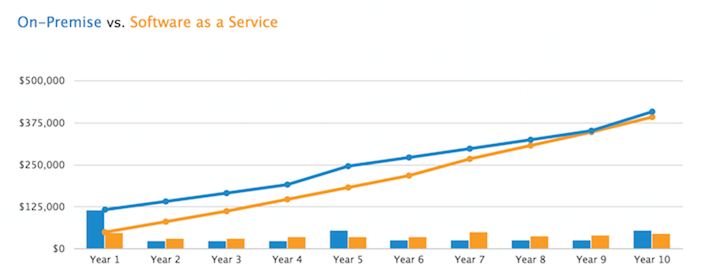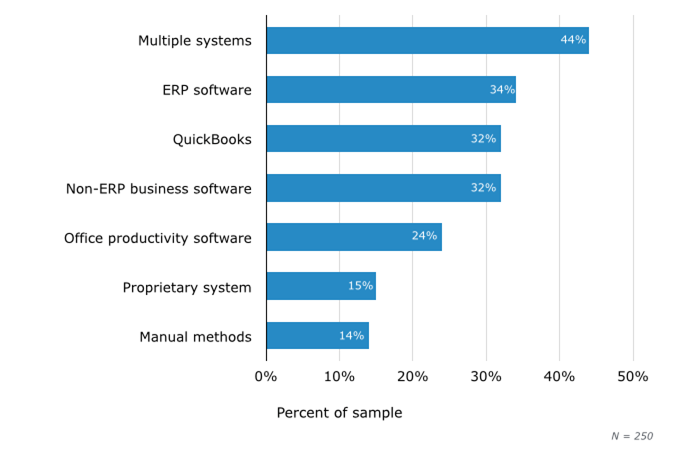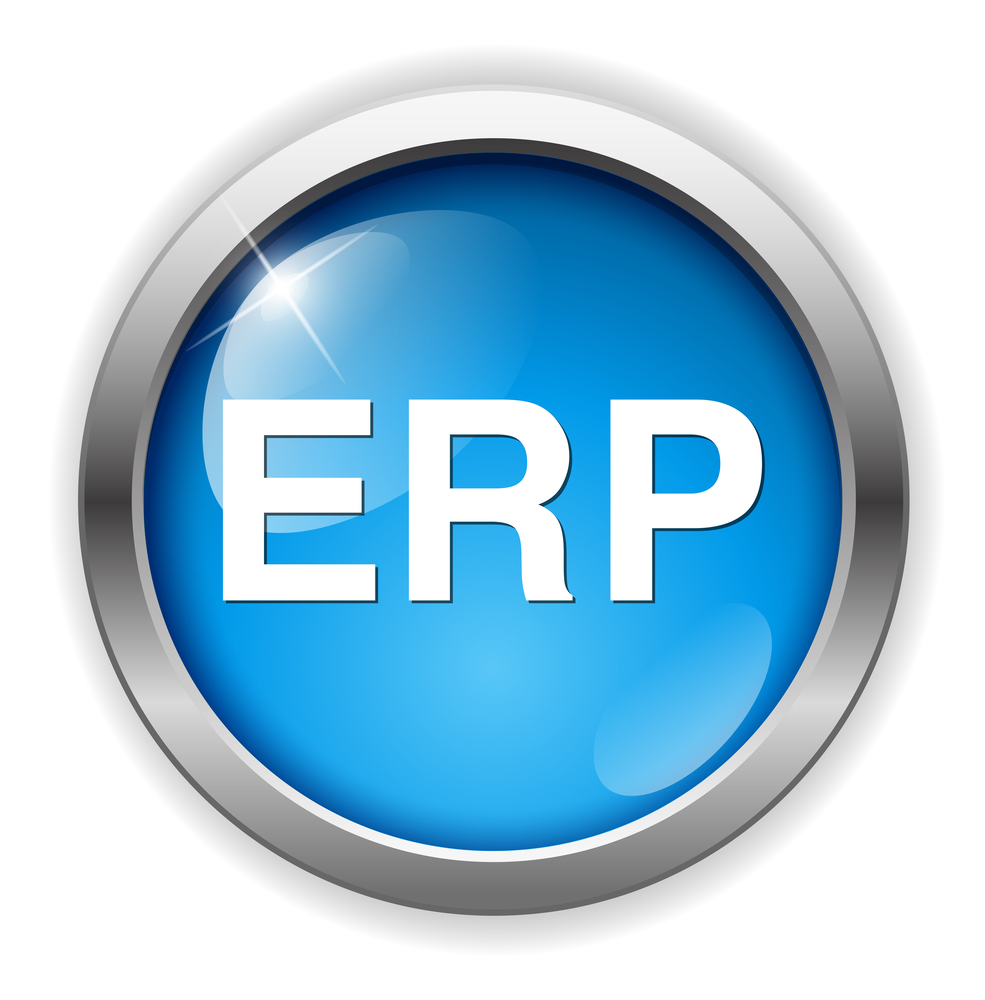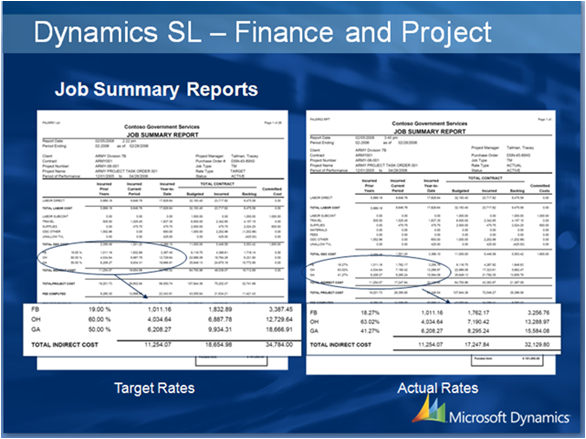Cloud Subscription Based ERP Software vs On-Premise Server Based ERP
Cost, Control and Customization Drive the Debate
Please visit Software Advice for the original version of this article.
ERP VAR connects companies who have ERP Software needs with business partners and solutions to explore their options to best fit their business requirements.
Selecting a new ERP (Enterprise Resource Planning) system will require some important decision making, one of the first being the deployment option: Cloud-based versus server/On-premise-based.
Of course, there are pro’s and con’s to both options. In the recent years, small and mid sized business have increased their adoption of Cloud based ERP’s. Still, some companies might still see the need for the traditional on-premise solution.
We will explore the advantages and disadvantages of each type of ERP system and how to determine which is best for your organization.
Deployment and Pricing of Cloud ERP vs On-Premise ERP
The biggest difference between these two systems is how they are deployed:
- Cloud-based software is accessed through a Web browser and hosted on the vendor’s servers.
- On-premise software is installed locally, on a company’s own computers and servers.
Some vendors also offer “hybrid” deployments, in which cloud software is hosted on an organization’s private servers (more on this later).
Pricing is another key difference between cloud and on-premise solutions. Most cloud software are priced under a monthly or annual subscription basis, with additional recurring fees for support, training and updates.
On-premise software is typically priced under a one-time perpetual license fee(typically based on the size of the organization, annual revenue or the number of concurrent users). There are recurring fees for support, training and updates.
TUsually on-premise systems are considered a capital expenditure (one large investment up front) and cloud-based systems, are typically considered an operating expenditure (an additional overhead cost the organization will continue to pay).
Cloud-based ERP’s low cost of entry has contributed to its popularity compared with hefty, upfront perpetual license fees of on-premise systems. According to one study, 69 percent of enterprises were using cloud-based software or system architecture in 2014.
As you will see in the below chart, total costs of ownership (TCO) for both cloud-based and on-premise software converge with time:
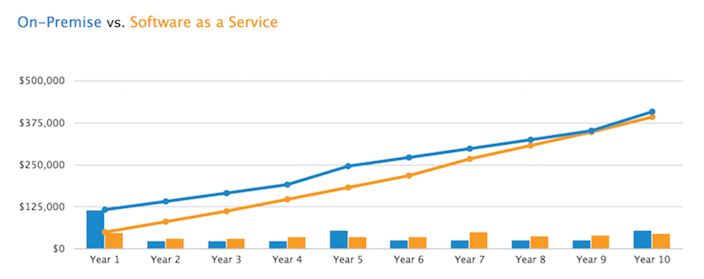
Cloud ERP Offers Low Initial Cost, No Hardware or Updates and Ease of Use
Below are the advantages and disadvantages of cloud-based ERP systems:
| |
Advantages Cloud ERP |
Disadvantages Cloud ERP |
| Cost |
- Predictable costs over time
- Low Initial Costs
- No additional hardware investments (e.g., server infrastructure, security, etc.)
|
- May end up spending more money over the course of the system’s life cycle
|
| Security |
- Data security is owned by the vendor
|
- Data security is in the hands of the vendor. While vendors pledge strict data security standards, some organizations might not have total peace of mind with this arrangement.
|
| Customization |
- Offers greater stability and continuous updates from vendor as a result of less customization
- Organizations can work with vendors to see what changes can be made
|
- Minimal customizable in general
|
| Implementation |
- Typically take less time to implement
|
- Shorter implementation times are largely a result of less customization and no server installation
|
On-Premise ERP Systems Are More Customizable, Offer Greater Control Over Data
Here’s a breakdown of the advantages and disadvantages to an on-premise ERP system:
| |
Advantages On-Premise ERP |
Diadvantages On-Premise ERP |
| Cost |
- Long term costs may be higher for Cloud-based
|
- More expensive initial capital investment
|
|
Security
|
- Data and security is in the hands of the organization
|
- Data security is in the hands of the organization. Some organizations might not be as adept at practicing proper data security protocols.
|
| Customization |
- Greater ability to customize
|
- Customizations can result in headaches when vendor updates software and increase TCO
|
| Implementation |
- Organization has more control over the implementation process
|
- Implementation process can take significantly longer
|

Cost, Control and Customization Drive the Debate
Security is the top reason why some ERP buyers are still choosing on-premise solutions. ERP data is critical and confidential—including company financials, corporate trade secrets, employee information, client lists and more.
When Cloud-based systems were introduced, security was the biggest detourant, but this is becoming less of an issue as Cloud-based solutions have strict data security policies. Also, there are independent third-party vendors that can vet the solutions security as well.
There also may be some functionality differences between cloud and on-premise ERP Systems.
Mobile accessibility can be challenging for some on-premise deployments and may require a third-party client to communicate between a mobile device and the on-premise software. Third party solutions can increase implementation and maintenance timelines and cost. Most cloud systems enable easy mobile accessibility via mobile apps, but this also poses greater potential security risks. Additional security policies and considerations should be explored.
For some organizations customizations are required and are critical especially in niche industries, such as specialized manufacturers with unique processes.
Less specialized companies such as a general consulting firm can get by just fine with a cloud system’s out-of-the-box capabilities.
Vendor Comparison: Cloud and On-Premise Deployment
Solutions should be based on business requirements, budget and time-lines. A vendor may recommend an on-premise, Cloud or hybrid to meet and organizations needs, but a lot of vendors have started offering more cloud based solutions and below is a list of ERP providers and their deployment options:
| Vendor |
Cloud-Based |
On-Premise |
Hybrid |
 |
x |
x |
x |
 |
x |
x |
x |
 |
x |
x |
x |
 |
x |
- |
- |
 |
x |
x |
x |
 |
x |
- |
- |
 |
x |
x |
x |
 |
x |
x |
x |
Conclusions
Today the options are unlimited and there are many solutions to meet any organization’s needs. Cloud-based deployments offer lower initial costs, minimal maintenance, ease of mobile accessibility, but also add some security concerns and customization limitations.
While on-premise ERP systems may offer advantages in customizations and data control, they are more expense up front and many do not support mobile.
Still not sure which deployment model is right for your organization? Give one of our Advisors a call at (888) 918-2748. One free 15-minute phone conversation can help you determine your needs, and get you a short list of vendors who can fulfill your requirements.
Please visit the experts at Software Advice for more information regarding ERP software options.

